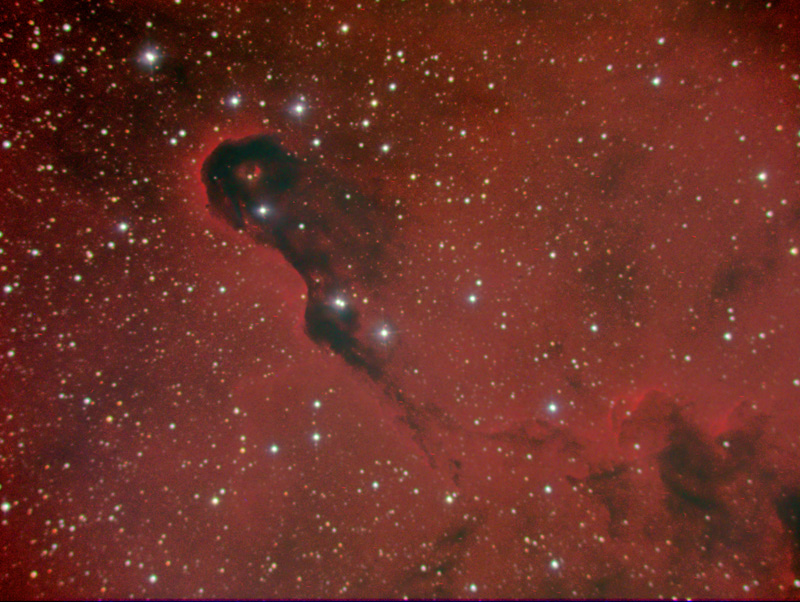

Image centered on Ra.21h - 37m Dec. 57deg 30m
VDB 142 in Cepheus
Information (From the NASA Goddard Space Flight Center APOD)
A gorgeous collection of dust and gas nebulae in the Northern Milky Way graces the high and far off constellation of Cepheus. With colors based on astronomical filters, this close up of the region highlights stars embedded in curiously shaped cosmic clouds. Near the central faint (9th magnitude) star in the image, dust clouds reflect the starlight, creating a bluish reflection nebula cataloged in 1966 as VDB 142. The area's bright reddish emission nebulae indicate the presence of clouds of atomic hydrogen gas. Stripped of electrons by invisible ultraviolet light, the hydrogen atoms emit their characteristic visible red light as electrons and atoms recombine. Sweptback clouds of obscuring dust, dark nebulae, are silhouetted against the bright background. Representing the stuff stars are made of, all these nebulae lie within the large young star cluster complex IC 1396, 3,000 light years from Earth.
Optics - Exposure information
Telescope, Vixen R200ss 8 inch Newtonian at F4 (Fl 800mm) with a Televue Coma Corrector and aftermarket Moonlite accessories focuser.
Mount, Losmandy G11 with Gemini control electronics
Imager, Starlite-Xpress SXV-h9 using Astronomiks RGB and Schuler Ha optical filters.
Exposure data, Ha = 90 minutes total with 5 min subexposures, RGB = 15 min each with 2 min subexposures. Final RGB composite image = (Ha+R)Gb.
Images acquired with Astroart and aligned then combined in Maxim Dl. Final RGB composite processed with Photoshop Cs
Images acquired from my backyard - " Dirt Clod Observatory" in Antelope California